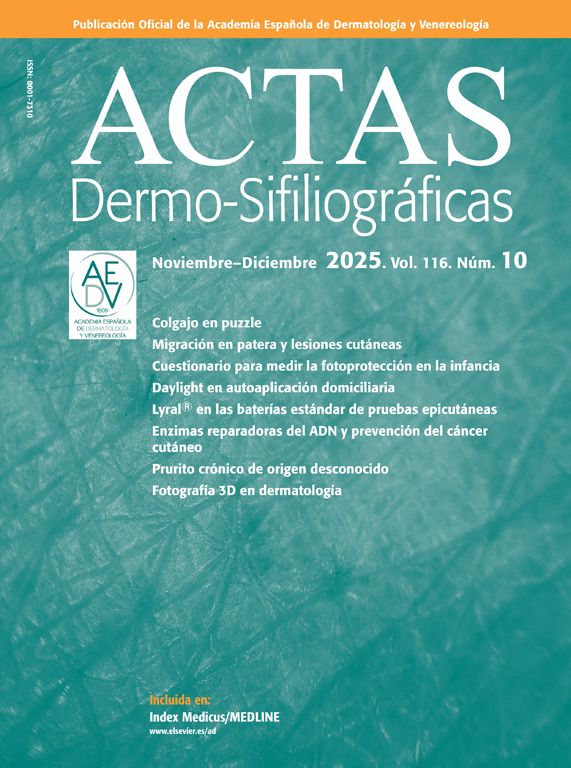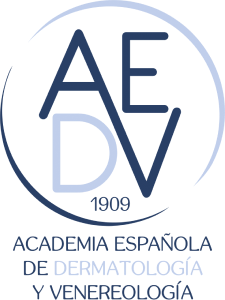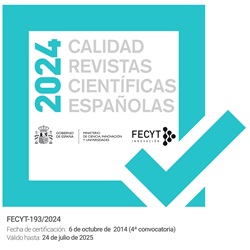Any article submitted to this journal will follow the guidelines described in this author’s guide, so it is essential to consult it before submitting manuscripts.
FIRST PAGE
Regardless of the type of article, for any section of this journal, authors must always include on the first page of the article, in addition to the title, authors, affiliations, and email address, statements regarding Ethical Considerations, Informed Consent, Funding, Conflict of Interest, the Use of Artificial Intelligence, and Authorship.
Declarations are required even if the author considers that none exist or are not applicable.
Ethical Considerations
Any article involving experiments with humans will require the author to declare that all procedures were conducted in accordance with Helsinki, relevant laws, and institutional guidelines. The reference number of the study approval by an ethics committee must be included in original articles or research involving human experimentation. For animal experiments, compliance with applicable regulations should also be stated.
This declaration is mandatory in both Original Articles and Short Communications.
Informed Consent
Appropriate consents and permissions must always be obtained whenever there is experimentation, when case presentations are included without experimentation, or when an author wishes to include details or other personal information (data) or images of patients or any other individuals in an Elsevier publication. It must be declared that no patient data are included in the article, or if they are, that they do not violate the patient's privacy and confidentiality or allow recognition of the individual, and that written informed consent is in possession in any case. The rights to privacy of human subjects must always be respected. The author will declare that these consents have been obtained on the first page and within the manuscript, but will not send these documents unless Elsevier requests them.
This declaration is mandatory in all sections, except for Editorials, Letters to the Editor, and Reviews and any section with an update content that do not include Case Reports: Practical Dermatology, Controversies in Dermatology and Novelty in Dermatology,
Funding
The author will identify who provided financial support for the conduct of the research and/or preparation of the article and will briefly describe the role of the sponsor(s), if applicable, in study design; data collection, analysis, and interpretation; drafting the report; and the decision to submit the manuscript for publication. If the funding source(s) did not participate in these activities, this should be declared.
This declaration is mandatory in all sections. If there is no funding, the author must explicitly declare that none exists.
Conflict of Interest
Any type of financial or personal relationship with other individuals or organizations that could have influenced the work should be disclosed, even if not directly related to the current manuscript. Examples of potential conflicts of interest include employment, consultancy, stock ownership, honoraria, paid expert testimony, patent applications or registrations, other funding, travel grants, and participation in courses and conferences as a paid expert. If none of these conditions apply, the statement should be: "Declaration of interest: none."
In the case that a member of the Editorial Board contributes as an author of a submitted manuscript, the responsible editor must include the following statement in the conflict of interest section: “As ABC is a member of the Journal’s Editorial Board, they have not participated in or had access to review or acceptance information of the manuscript.”
This declaration is always mandatory and must be provided for each participating author.
Use of Generative Artificial Intelligence in Scientific Writing
Other uses are not authorized. Please see the detailed description later in these guidelines.
Mandatory declaration whenever AI is used.
Authorship
Those listed as authors must have made substantial contributions. Changes in authorship or order of authors after submission are not permitted without prior justification and approval by the Editor-in-Chief.
See the relevant sections later in these guidelines.
BODY OF THE ARTICLE
Ethical Considerations and Consent should also be declared beyond the first page in cases involving animal or human experimentation.
Ethics and Informed Consent
In the case of experiments involving humans or animals, the author must declare in the “Materials and Methods” section that the guidelines for Human and Animal Rights described in the “Ethics in Publishing” section of this author’s guide have been followed. Specifically, for experiments with humans, authors should confirm that the research was conducted in accordance with the World Medical Association’s Declaration of Helsinki, and for animals, that the ARRIVE guidelines were followed or that the research complies with the applicable laws on the Use and Care of Laboratory Animals and, when applicable, Animal Welfare Laws. Authors must also declare that they have obtained approval from the Institutional Review Board (IRB) or the relevant ethics committee, without revealing data that could hinder blinded review, and that they have obtained informed consent from the patients. Please note that the Spanish Biomedical Research Law states that ethics committees at each center must evaluate all biomedical research involving interventions in humans or the use of biological samples.
These declarations will be included in the Materials and Methods section of Original Articles, Short Communications, and sections publishing Case Series.
When one or more cases are presented without experimentation, or when an author wishes to include personal details, other information, or images of patients and any other individuals in an Elsevier publication, the author must declare that they possess the written consent of the patients. All articles that include data, photographs, or evidence involving patients—whether anonymized or not—must explicitly state in the body of the article that informed consent has been obtained from the patients for their reproduction.
To avoid any doubt, informed consent is always required in clinical cases, regardless of whether the images are anonymized or not, including radiographs. Images accompanied by any patient data always require this declaration.
They will be included in the Problem Case, Practical Dermatoscopy, or another section where one or more clinical cases appear.
TYPES OF ARTICLES
Original Articles. This section includes original work in clinical and basic research. Recommended study designs are experimental studies (clinical trials) or observational studies of analytical types (case-control and cohort studies) or descriptive (cross-sectional). For clinical trials, the CONSORT guidelines should be followed (available at: http://www.consort-statement.org/), as well as the STARD initiative for diagnostic tests (http://www.stard-statement.org/) and the STROBE guidelines for observational studies (http://www.strobe-statement.org/). It is advised that, in single-center studies, the number of authors does not exceed six. Multicenter studies may consider more authors. The maximum length of the manuscript is 2500 words (excluding the title page, abstract, references, tables, and figure legends). Up to 30 references, 6 figures, and 6 tables are permitted. Include an unstructured abstract of up to 250 words, structured into sections: background and objectives, materials and methods, results, conclusions, and keywords. Modifications to these guidelines are only allowed in exceptional cases with prior permission from the Editor. It is recommended to submit supplementary material such as additional tables, figures, or methodologies that, while not essential for understanding the work, may be useful for replication or detailed reading.
Brief Communications. This section is suitable for reports on short series of patients or long series that validate previous findings, as well as brief research articles signed by up to 6 authors. If it is a study, it should follow the style and design recommendations for original articles. Include an unstructured abstract of up to 150 words and keywords. The maximum length is 1500 words (excluding title page, abstract, references, tables, and figure legends). Up to 3 figures and/or tables and a maximum of 20 references are allowed. The manuscript should be structured with the following sections: a) abstract (summarizing key findings); b) main text with the following sections: introduction, clinical cases/patients and methods, results, discussion; and c) references. As with original articles, supplementary material such as additional tables, figures, or methodologies that are not essential for understanding but useful for replication or detailed reading may be submitted electronically.
Review. Aims to update a dermatological topic thoroughly based on current, high-quality scientific evidence. It should be signed by a maximum of 3 authors. The text should not exceed 3500 words (excluding title page, abstract, references, tables, and figure legends), include up to 8 tables/figures, and a maximum of 100 references. Include an unstructured abstract of up to 150 words and keywords. Reviews are commissioned by the Editorial Committee or upon prior request to the editor (ad@elsevier.com) and are peer-reviewed. Priority is given to systematic reviews, which should follow PRISMA guidelines (https://www.prisma-statement.org/). If they include meta-analyses, the format should resemble that of original articles. For reviews with recommendations concerning procedures and/or preventive, diagnostic, or therapeutic techniques, include the level of evidence and grade of recommendation according to SIGN, Oxford, or NICE classification systems.
Practical Dermatology. A review article on a topic with an essentially practical approach. It should be concise, focusing on clinical practice recommendations. Signed by up to 3 authors, with a maximum length of 2500 words (excluding title page, abstract, references, tables, and figure legends). Include an unstructured abstract (max 150 words) and keywords. Up to 8 figures, charts, tables, or algorithms are recommended to aid understanding. Up to 50 references are allowed. These are commissioned or submitted upon prior request and peer-reviewed. Evidence levels for recommendations should be included as described for general reviews.
Controversies in Dermatology. A review article on a topic with controversial aspects, presenting personal opinions and different viewpoints from the literature. Signed by up to 3 authors, with a maximum of 2500 words (excluding title page, abstract, references, tables, and figure legends). Include an unstructured abstract of up to 150 words and keywords. Up to 6 figures or tables and 30 references are permitted. These are commissioned or submitted upon request and peer-reviewed.
Novelty in Dermatology. An article that concisely reviews and discusses a current, highly relevant topic. 1 to 3 authors are allowed. Maximum 2500 words (excluding title page, abstract, references, tables, and figure legends). Include an unstructured abstract of up to 150 words and keywords. Up to 6 tables/figures and 30 references are permitted. These are commissioned or submitted upon request and peer-reviewed.
Consensus Documents. An article of up to 2500 words that compiles consensus documents, recommendations, and clinical or diagnostic guidelines developed by a working group or scientific society. Include an unstructured abstract of no more than 150 words and keywords. May include up to 8 tables or figures and 100 references. The article must specify levels of evidence and grades of recommendation according to current international guidelines. It is recommended to include supplementary material detailing procedures used in creating the document.
Challenging cases. Manuscripts will include original, unpublished clinical cases described by 1 to 3 authors, without an abstract but with keywords. The goal is to present cases with relevant educational features, such as atypical clinical presentation, characteristic findings, histological, dermatoscopic, etc. The title may suggest the final diagnosis if the diagnostic challenge is unrelated to the entity itself. High-quality, well-focused images with neutral backgrounds are required.
The manuscript will have two parts: 1) Case presentation (max 200 words for inclusion on a printed page), including: a) clinical history; b) physical examination; c) histopathology (describing findings without concluding diagnosis); d) other complementary tests; e) up to 3 high-quality color images (clinical, histological, dermatoscopic, etc., without figure legends, described in the text). 2) Diagnosis and comments (max 450 words, excluding references), including: a) diagnosis; b) clinical course and treatment; c) discussion of the disease, the presented case, and differential diagnosis, emphasizing the case's originality; and d) references (up to 6).
Practical Dermatoscopy. Focuses on the discussion of dermatoscopic-clinical case reports. Presents cases with challenging clinical diagnosis where dermatoscopy provides key diagnostic clues. Signed by up to 3 authors, no abstract required. Sections include: 1) Problem case presentation with two clinical images and a brief description (≤50 words, excluding diagnosis); 2) two dermatoscopic images with the question: "What is your diagnosis?"; 3) Commentary (max 400 words, excluding references), describing the images and key features used for differential diagnosis. Up to 6 references are allowed.
Research Letters. This section is dedicate to publish short clinical or translational studies. Up to 6 authors, maximum 800 words (excluding abstract and keywords), with up to 3 figures/tables and 10 references.
Images in Dermatology. Original, high-quality images illustrating clinical, pathological, or imaging features (dermatoscopy, confocal microscopy, ultrasound, etc.) of dermatological diseases or test results, with significant educational value. Usually a single image or composed of up to 2 images, accompanied by a 200-word explanatory legend. The title should be brief (minusq10 words), indicating the pathology, and no more than three authors. The image must be exceptional in quality, well-focused, with a neutral background, and representative of the pathology.
Letters to the Editor. Critical opinions, agreements, praise, or comments regarding published articles or the journal's content. Signed by up to 4 authors. No abstract or keywords. Up to 800 words and 3 figures/tables. Up to 10 references allowed.
Opinion Articles. Personal viewpoints on dermatology topics, possibly referencing related publications. Usually unstructured, up to 2000 words (excluding references, up to 20), no abstract, keywords required. Up to 2 figures/tables may be included.
History and Humanities in Dermatology. Articles on the history or humanities related to dermatology and venereology. Up to 1500 words, no abstract or keywords, with up to 3 authors, 3 figures/tables, and 10 references.
Surgical Videos. Demonstrations of innovative surgical techniques, modifications, or complex case resolutions. Signed by up to 4 authors. The video (max 10 minutes) should be accompanied by a descriptive text (up to 800 words), including sections: introduction, technique description, indications/contraindications, complications, conclusions, and references. Up to 3 figures/tables may be embedded. The video file should not exceed 50 MB and must be compatible with common media players. The video will be published online, and the article will appear in print.
Resident Forum. Short bibliographic reviews by dermatology residents (medical trainees in dermatology), on current or impactful topics or recent articles providing new insights into etiology, pathophysiology, diagnostics, or treatments. Signed by up to 3 authors, no abstract, keywords required. Up to 500 words, with optional 1 figure/table, and up to 5 references from PubMed-indexed articles related to the discussed topic.



